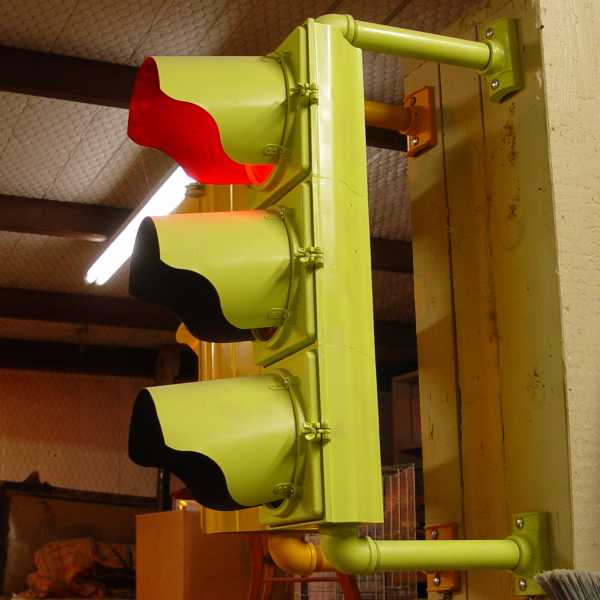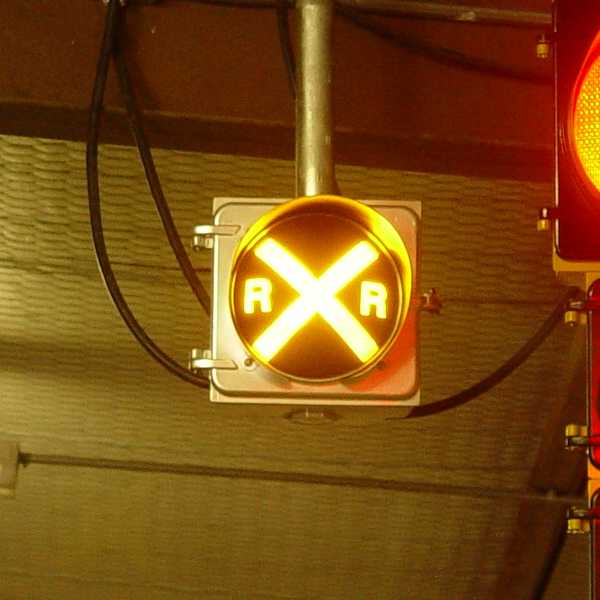Willis Lamm's
|
|
SIGNAL APPLICATIONS FOR SET DECORATION |
Click on each photo to see a larger view of each signal.
| More Unique Single Face Signals |
|
12-8-8 Signals
Until the mid 1950s virtually all traffic signals had 8 3/8" lenses. Manufacturers then started coming out with 12" lenses for single faced signals. At first most signals only had 12" red sections - the idea being that the 12" red would stand out more clearly. Eventually the standard evolved so that all new signals, except on certain streets with very low speed limits, had all 12" sections. The signals on the right are early 60s vintage 12-8-8s and are shown to compare with the previous 8-8-8 convention. |

|
|
Marbelite Flat Top
The 1940s and 1950s in particular saw a number of interesting designs in signal visors. Where pedestrians needed to see the signal indications, cutaway or "ball cap" visors were usually used. Where the changing light from signals were annoying to second floor apartment dwellers (whose windows were roughly in line with suspended signals) tunnel visors were used to limit side splash. Marbelite came out with these hybrid visors commonly referred to as "tunnaways" that still allowed pedestrians to see the signal but helped limit the side splashes of light. |

|
|
Highway-Signal and Sign
Highway-Signal and sign manufactured single face signals in the 1940s. This particular signal is a single section "CAUTION" beacon. (The "Signal Ahead" sign below it is obviously more contemporary.) Many of the earlier beacons used the script "SLO" on the lenses. Many early drivers were illiterate. As a result lettered lenses used a different number of letters to aid those who couldn't read English and the three letter "SLO" was used instead of "SLOW" to make it distinctive from the four letter "STOP." GO, SLO, STOP and CAUTION were the typical scripts. "SLO" was used as a warning and "CAUTION" was used to signify a signal change and also for intersection beacons. |

|
|
Eagle Railroad Preempt
Many older towns and cities had busy streets that shared rights of way with railroad tracks or where tracks ran along one shoulder of the street. The proximity of trains presented a problem for installing traffic signals at roadway intersections that also included train tracks. A common resolution was to cause the signal to go to all red flash when a train approached. In a number of locations an additional signal head that displayed "RXR" would light warning motorists to check the tracks for an approaching train before changing lanes or making turns. |

|
Signals can be repainted for specific set requirements. Many can either be wire hung or adapted for post mounting.
Additional models and designs can be located for specific requirements.
Return to Part Five
Return to Signals Page
Contact Willis